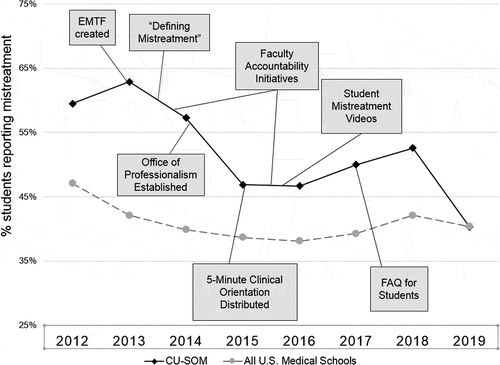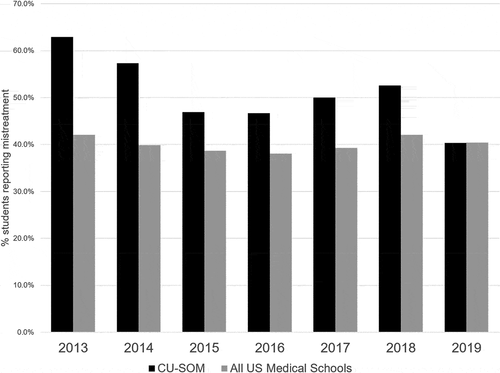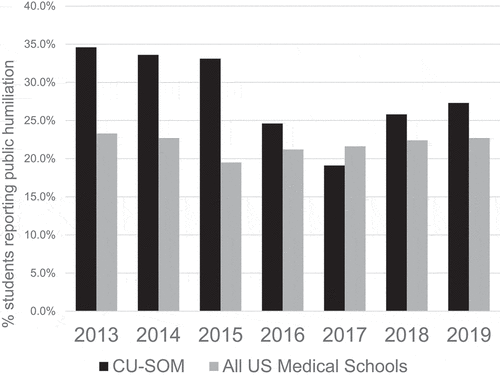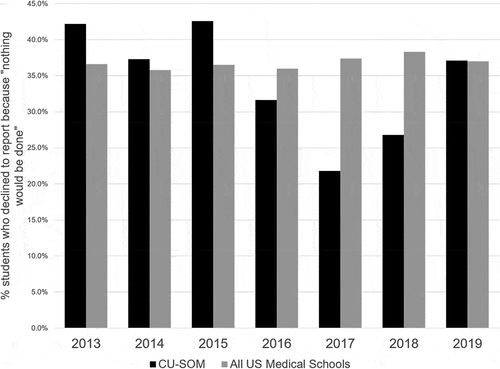Figures & data
Figure 1. Timeline of interventions and reports of mistreatment from the AAMC Graduation Questionnaire.
EMTF: Ending Mistreatment Task Force.
Defining Mistreatment: A document providing definitions and examples to distinguish mistreatment from a sub-optimal learning environment.
Faculty Accountability Initiatives: Included distribution of a new faculty Code of Professional Behavior, a revised Teacher-Learner Agreement, a Faculty Promise imbedded in annual faculty performance reviews and explicit description of professionalism obligations in letters of offer for new faculty.
Office of Professionalism: A confidential resource for reporting mistreatment and a means to provide confidential, non-punitive feedback to teachers reported for mistreatment.
The Office also conducted outreach activities in an effort to promote an institution-wide culture of professionalism and respect.
5-Minute Clinical Orientation: A guide for clinical teachers that addressed myths about millennial learners, reinforced students' expectations for hard but respectful questions and recommended ‘best practices’ to help promote a respectful learning and clinical care environment.
Student Mistreatment Videos: Student-produced videos illustrating examples of mistreatment, including student neglect, humiliating questioning, racial and gender bias toward students and dehumanizing remarks directed at patients or clinical care team members.
FAQ for Students: A document produced by the Office of Professionalism and the EMTF, describing the procedures for reporting mistreatment and reinforcing the benefits and safety of reporting.

Table 1. Examples of mistreatment defined by the ending mistreatment task force. a.
Table 2. Examples of a suboptimal learning environment a.
Figure 2. Rates of mistreatment – CU School of Medicine vs all US allopathic medical schools. Source: AAMC Graduation Questionnaire



